Bay Weekly’s • Ninth Annual
Groundhog Day Movie Guide
Every year at this time, a groggy groundhog is coerced from its warm burrow as our barometer measuring spring’s appproach. But any groundhog worth its warm pelt knows that February 2 is way too cold and way too early for spring. Shadows are not what groundhogs want to see in the early days of the calendar’s bleakest month. Like us, the groundhog illuminates these last six week’s of winter with the glare of good movies on the television screen.
In creaturely sympathy, Bay Weekly writers have conspired to choose 46 great, good or merely entertaining flicks, enough to get us through to the first day of spring on the vernal equinox March 20.
We’ve spanned eight decades (who’d have imagined The Wizard of Oz was made in 1939?) arranging our picks in 10 watchable categories by date, from oldest to newest. Again this year, we’ve shined our spotlight on stars who took their last bow in 2005.
Add popcorn, refreshing beverages and good company and make like the groundhog. Burrow down.
I. Action / Adventure
This genre is high-octane, gear-ratcheting action by men, women, machines and monsters. With fast cutting, steep slopes and hard edges, it comes at you like a roller coaster. In some of the best of type, quick minds replace fast feet, fists and guns.
Sands of Iwo Jima
1949 • NR • 109 mins.
Director: Alan Dwan
John Wayne was nominated for his first Oscar for his portrayal of tough Marine Sergeant Striker, who trains a squad of undisciplined recruits during World War II. He knows from experience that their survival in battle will depend on how effectively they’re trained and perform as a unit. Despite his family difficulties, Striker is dedicated to his job. His efforts pay off during several battles against the Japanese in the Pacific and his unit’s capture of Iwo Jima.
Striker is killed by a sniper, but his squad raises the American flag on Mount Surabashi. What appealed to me and Marines of my generation were Sergeant Striker’s patriotism and pride in the Marine Corps, hard Marine training and performance in battles.
I met the friendly, unassuming John Wayne in Orange County before the name of that airport was changed to John Wayne. A large bronze statue of the actor now dominates the lobby.
—Eugene Melnitchenko
The Good, the Bad and the Ugly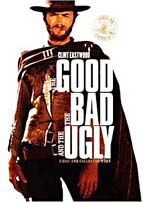
1966 • R • 161 mins. • Director: Sergio Leone
Here behold the spaghetti Western in all its splendid glory.
Third in Sergio Leone’s famed spaghetti Western trilogy, this movie pits The Man With No Name (Clint Eastwood, the good) against hitman Angel Eyes (the bad) and Mexican bandit Tuco (the ugly) in a quest to find a $200,000 stash of Confederate gold. Each has only part of the clue, and the men form fragile alliances that quickly crumble in self-interest.
It’s everything you could want in a classic Western adventure: quick draws, shootouts, bodies careening over balconies, swinging gallows, double crosses and dusty street showdowns. The tale is set during the Civil War, and the danger of the quest is compounded as their trail cuts across bloody battlefields and cannon ranges. It’s more fun than dark, though, as a perfect dose of wit and humor keeps entertaining. This is a gritty, dirty, tainted good-guy kind of film — just the way a real Western should be.
—Mark Burns
Indiana Jones and the Last Crusade
1989 • PG-13 • 127 mins. 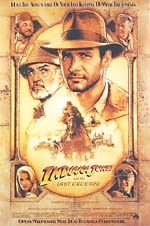
Director: Steven Spielberg
First there was Raiders of the Lost Ark, which gave us a new breed of cinematic escapism straight from the pages of pulp adventure novels. The thrills were endless and unstoppable: high-speed chases, snake-inhabited tombs, even the wrath of God, set in exotic locals against the backdrop of the tumultuous, romantic 1930s. Eight years later — we can skip over the gory sequel — Spielberg finally matched himself in what we hope remains the final Indiana Jones installment.
But The Last Crusade does one better than Raiders, not merely duplicating the original formula but deepening it. It opens with teenage Indy’s pivotal first adventure, to which his bookish father Henry (Sean Connery) is notably oblivious. When an adult Indiana (Harrison Ford) is sent on a quest to save the Holy Grail from the Nazis, he finds himself instead on a quest to save his estranged dad, who happens to be the world’s foremost expert on the Grail.
Once the father is found, the two form a reluctant but comical duo. Connery plays the fussy, detached Henry Jones just right, and the counterpoint between father and son — who share a stubborn streak — breathes new life into the hallmark Indiana Jones thrills, of which there are plenty. Their awkward partnering is played for all gags, especially concerning a certain blonde fraulein, Grail historian Elsa Schneider. Father and son’s ability to rise above old personal greeds is what ultimately preserves their lives and relationship. In the end it is not the Grail that matters, nor the “fortune and glory” Indiana once claimed to seek, but a faith in things larger than one’s self.
—B.C. Phillips
Serenity
2005 • PG-13 • 119 mins.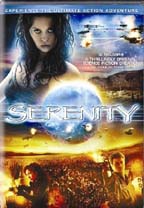
Director: Joss Whedon
I was a late convert to writer and director Joss Whedon’s imaginative television writing for Buffy the Vampire Slayer and Angel. He can be corny and over-the-top in a high school theater or Broadway musical kind of way. Turns out I was a big dummy. As were we all for not watching Firefly, Whedon’s finest television series, aborted after 12 episodes in 2002 but now adapted into Serenity, his feature film directorial debut.
Set 500 years in the future, Serenity follows a band of outsiders making ends meet on a new frontier, finding work either transporting goods or stealing them. As harborers of known fugitives, the crew keep to the outskirts of civilization, avoiding the dialectic poles of the known universe: the opulent, conformist interplanetary government known as the Alliance and the barely human, cannibalistic Reavers.
Though often illegal, Mal and his crew’s survivalist escapades resonate with moral authority, not unlike John Ford’s westerns starring John Wayne. Their rugged individualism stands against the bureaucratic and ethically-suspect Alliance. In one confrontation, the captain draws a line with “I don’t kill women and children”; to which the Operative responds, “I do.” Each life taken in this film is reasoned and justified by the killer who takes it — though the question of what qualifies a killing as just is this film’s rich, chewy center.
—Bradley Sroka
II. Chick Flicks
In the stereotype, Woman has been very good, very bad or very sorry. In the true chick flick, our heroine steps out of the stereotype. At last, she has a good time and — though she may not get everything she wants — she gets what she needs. This year, she succeeds with a light touch, no grit and lots of scenery.
Pride and Prejudice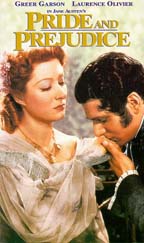
Romance: 1940 • NR • 109 mins.
Director: Robert Z. Leonard
Jane Austen’s novel has had several cinematic adaptations. It’s currently playing to good reviews in local theaters. The 1940 black-and-white version, starring the very talented Greer Garson (1908-1996) as Lizzie Bennett and Laurence Olivier (1907-1989) as the arrogant, aristocratic Darcy, stands up well to the new version and has the advantage of brevity over the A&E mini-series, almost three times as long.
The story is now familiar. Lizzie is one of five unmarried daughters without a dowry. The scene, surprising in its feminist zeal, in which she refuses Darcy’s marriage proposal should have won Greer Garson an Oscar. In the end, love triumphs over class prejudice, an unfair inheritance system and scandal.
—Helena Mann-Melnitchenko
Roman Holiday
1953 • NR • 118 mins.
Director: William Wyler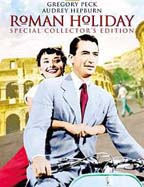
Director William Wyler’s Roman Holiday is a playful travel romance, blending wit and familiar Italian scenes. The ever-charming Audrey Hepburn plays Princess Anne, on official tour in Italy and feeling constrained by a posh royal life. She makes a midnight escape from highbrow pageantry for a fantasy day in Rome as a regular traveler. Undercover American reporter (the dashing Gregory Peck) sees through her ruse, but she gets her day off and the reporter gets his story. Their scenic day of Roman adventures leads to love, of course, for the movie is a romantic comedy.
If romance and Italy can’t reel you in, let the critics speak for the film: it won three Academy Awards, including a Best Actress Award for Audrey Hepburn.
—Carrie Steele
A Room With a View
1986 • NR • 116 mins.
Director: James Ivory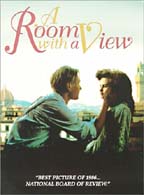
Adapted from E.M. Forster’s book, this gorgeous film is a gift to movie-lovers from the master filmmaking team of Ismail Merchant and James Ivory. With sumptuous locations from decadently romantic Italy to very proper England, together with stellar acting from the entire cast, this film aces the test of time.
While on holiday in Italy, Lucy Honeychurch (Helena Bonham Carter) meets the handsome and intriguing George (Julian Sands) a passionate dreamer unimpressed by propriety. His bold, unconventional ways put her off — at first. When she returns home to England, she tries to forget George, and his kiss, as she becomes engaged to the very proper, very boring Cecil (Daniel Day-Lewis). When Lucy and George unexpectedly meet up again, (while he is swimming naked with the Reverend Mr. Beebe, brilliantly played by Simon Callow, in one of the movie’s funniest scenes), the romantic hijinks begin.
The exceptional cast includes Judi Dench as Eleanor Lavish, the unconventional author, and Maggie Smith as Charlotte Bartlett, Lucy’s proper cousin and chaperone. Faithful to the period (1900-1910) of Edwardian transition in morals in England, this film may be considered a chick flick, but the men I know enjoyed it every bit as much as the chicks.
—Margaret Tearman
Strictly Ballroom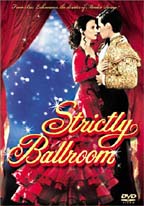
1992 • PG • 94 mins.
Director: Baz Luhrmann (Australian)
If you love dance and ugly duckling/Cinderella stories, this Australian romance is for you. Baz Lurhmann’s debut as director garnered over 16 awards including a Golden Globe and shines with the same color and movement that brought him Oscars for Moulin Rouge. In their film debuts, Paul Mercurio plays Scott, a rising star who needs a partner, and Tara Morice plays Fran, the mousy clumsy student who dreams of being that partner. Mix in a struggle for creativity, a fight for independence, a pushy mother, a broken dad, a gypsy fiddler and a lot of missteps as the two trip over their emotions in a tempestuous dance of love.
—Kat Bennett
III. Classics & Epics
Whatever the genre, it’s never been done better. Classics set the gold standard, and they never grow old. Prepare to be thrilled, whether you’ve seen them or not.
The African Queen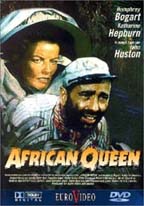
Adventure: 1951• NR • 105 mins.
Director: John Huston
The gruff, hard-drinking and thoroughly secular Charlie Allnut (Humphrey Bogart) finds himself stuck on a steamboat with the prim, imperious and thoroughly proper missionary spinster Rose Thayer (Katherine Hepburn) as they flee the German army downriver in World War I Africa. Lucky for Charlie, he has two cases of gin on board … until Rose empties the bottles into the river.
A war of opposing personalities ensues in full force, even as the two battle river rapids, leeches, mechanical problems and eventually the Germans. But the opposites slowly attract, and both characters evolve and deepen in response to each other. Bogart and Hepburn’s first and only on screen pairing results in the most memorable performances of their careers.
Filmed on location in the Belgium Congo and Uganda (the hardships of which were recorded by Hepburn in her book The Making of the African Queen, or How I Went to Africa With Bogart, Bacall and Huston and Almost Lost My Mind), this grand adventure-comedy-romance has something for everyone.
—B.C. Phillips
Throne of Blood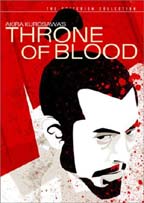
1957 • R • 160 mins.
Director: Akira Kurosawa (Japanese)
Kumonosu jo or Throne of Blood is Macbeth as you have never seen it before. Set in 16th Century Japan, the movie has a stark and ominous elegance that sinks this tragedy story ever deeper. Skip the dubbed version; you will not want to miss the poisonous intensity that Isuzu Yamada’s voice conveys as Lady Asaji (Lady Macbeth). As the aspiring warlord, Washizu (Macbeth) Toshiro Mifune gives a riveting performance, but the rivets are driven home by his power-mad wife. One scene shows only the backlit silhouettes of Lord and Lady Washizu sitting apart facing the door, like the outlines of two distant mountains. Then she speaks and her voice fills the room, overwheming, nagging, driving. As she goes on and on, we can feel Washizu begin to break, and we break with him.
—Kat Bennett
West Side Story
Musical: 1961 • NR • 152 mins.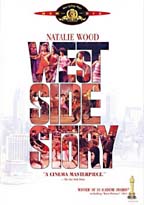
Directed by Jerome Robbins & Robert Wise
The classic story of Romeo and Juliet was modernized for Broadway well before film directors Jerome Robbins and Robert Wise brought it to the big screen. It’s a romantic tragedy, but Wise — who made movies from the 1940s’ The Curse of the Cat People to the new millennium’s A Storm in Summer before his death in September of 2005 — created a West Side Story that delights with tenderness, song and choreography as well moving with strong emotions.
Among a cast of famously memorable characters, Natalie Wood plays a sweet Maria and Richard Beymer plays a tough but tender Tony.
With classic songs to keep you humming, West Side Story adapts Shakespeare’s tragic love story to New York’s tumultuous West Side in the 1950s, where two gangs rumble as the new wave of Puerto Rican immigrants clashes with native New Yorkers in a fast-paced, Broadway-style classic of forbidden love, gang skirmishes, cultural pride, family obligation and the strength of the American ideal.
The result won Robbins (who was fired after shooting 60 percent of the film) and Wise an Oscar for best directing in 1962, the first time a directing award was shared.
—Carrie Steele
The Graduate
1967 • PG • 105 mins.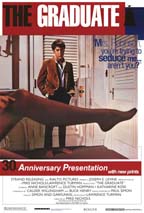
Director: Mike Nichols
Benjamin’s a little worried about his future. Home in L.A. after college, adrift and bewildered by the world he’s inherited, Benjamin (Dustin Hoffman) finds himself seduced into an affair with the sexually frustrated wife of his father’s business partner (a flawless Anne Bancroft, who died in June of 2005). The naïve, directionless Benjamin is easily, willingly exploited by the decadent, acerbic Mrs. Robinson, herself a tragic figure of unhappy marriage. Benjamin can’t understand or anticipate the wrath he unleashes when he falls in love with Mrs. Robinson’s college-age daughter, Elaine.
The movie pits an older generation, corrupt with materialism, against a younger, innocent generation for which hope still remains. Against all odds, Ben attempts to recover Elaine even after she finds out about his affair and becomes engaged to a more suitable man. It is this irrational but impassioned rebellion against larger social forces that awakens the vitality in them both. A now-classic soundtrack by Simon and Garfunkel provides essential mood and pacing.
“It’s too late!” Mrs. Robinson growls in a deep and tragic voice, as Elaine and Ben try to flee Elaine’s wedding. “Not for me!” screams Elaine as she and Ben push through the crowded church and into the open world. I have never seen the liberating cry of the 1960s depicted more powerfully in a single scene.
—B.C. Phillips
IV. Comedy
Comedy has many forms. From the smile of delight to the side-splitting wrench, all get inside you. Each of the movies chosen by this year’s critics will grab you in a different place. After you’ve watched them, let us know where.
Yours, Mine and Ours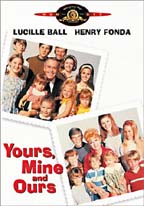
1968 • NR • 111 mins.
Director: Melville Shavelson
The ham-fisted remake now in movie houses can’t compare to the delightful original starring Lucille Ball and Henry Fonda. Ball’s character, Helen, a Navy widow and nurse with eight children, falls in love with Fonda’s Frank, a widowed naval officer with 10 children. While Frank and Helen work in tandem to merge the households and get them running ship-shape, the jealous children do everything they can to create disruption. Comic interludes abound as Director Shavelson takes the audience on a rollercoaster of emotions watching the hassled parents strive to make everyone realize there is no yours or mine, just ours.
—Maureen Miller
Stir Crazy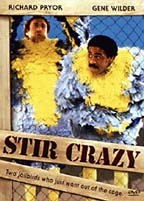
1980 • R • 108 mins
Director: Sidney Poitier
Existentialist comedy? That interpretation of this wonderfully silly movie goes down easier after you’ve swallowed the absurdity of it’s having been directed by Sidney Poitier, who put his trademark on the noble African American in his six decades as an actor. Back when this movie was made (long before the era of the rappers who talk and shoot bullets) shucking, street-walking and –talking Richard Pryor was about as different a shade of black from Poitier as you could get. But the years have given us perspective. By the time of Pryor’s death last year at 65, he’d become revered for his own kind of anti-heroism.
So what do you get but Hollywood Kafka with a racial twist when a black-and-white pair of woodpeckers get sent to prison for a crime they didn’t commit? Pryor plays his half of the luckless duo as the guy who knows the sky is falling; disaster comes naturally to him. As his lily-white opposite, sidekick Gene Wilder expects reason to prevail. In fact, it’s many random mutations of antic chance that set the pair free to suffer another day. Naturally, you’ll laugh till you cry.
—Sandra Olivetti Martin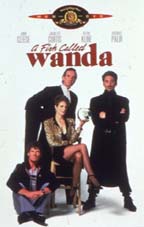
A Fish Called Wanda
1988 • R • 148 mins.
Director: Charles Crichton
If you’ve never seen this comedy, have some tissues at hand for your first viewing. This romp is so funny, tears are likely to roll. John Cleese and Michael Palin of Monty Python fame, team up with Oscar winner Kevin Kline and Jamie Lee Curtis to create a classic that’s fresh and funny no matter how many times you watch it. Jewel theft is the kick-off event of this British-based movie gem. It makes a proper mockery of English jurisprudence and includes lots of hilarious intrigue, crazy romance and just plain slapstick fun. Director Charles Crichton delivers up perfectly timed situational humor with a blend of base and sophisticated elements that American audiences love. By the end of this 148-minute film, “fish and chips” will take on a whole new meaning.
—Alice Snively
Bulworth
1998 • R • 108 mins.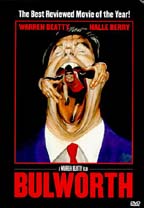
Director: Warren Beatty
This dark political comedy resonates in these cold months of Abramoff and DeLay like trash cans bouncing down a Capitol Hill alley. A tour de force for Warren Beatty, who wrote, directed, and stars, Bulworth tackles the inseparable American tandem: politics and money. Senator Jay Bulworth is a man whose once-high ideals have shriveled during his Senate tenure. Driven to the edge of a nervous breakdown by self-loathing, he jacks up his life insurance and hires a hit man to kill him. Now, with nothing to lose, he starts telling it like it is on the campaign trail, sometimes in rap! Fine performances from Halle Berry (a love interest with a twist) and Don Cheadle as a drug lord. Keep your ear tuned to what the censors term “pervasive strong language” and you’ll learn what a “nappy dugout” is just in time for campaign season.
—Al McKegg
V. Cult-Camp
These are the movies that make converts. Like religion, they inspire their faithful in ways that heathens can’t fathom.
Pink Flamingos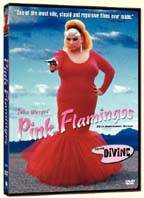
1972 • NC-17 • 108 mins.
Director: John Waters
You may well find yourself unforgivably offended. But this immortal trash comedy has joyous laughs in store for those who can stomach its over-the-top smashing of nearly every taboo we honor. Love it or hate it, it’s pure Bay Country, set and shot in and around Bawlamer by native son John Waters, featuring a cast of notorious Free Staters like drag queen Divine, Mink Stole and Cookie Mueller.
True, the film views little better than a home movie, but the script is smart and vivid, the characters unforgettable and the set-pieces legendary, featuring shocking acts never before or since captured on film.
The towering, irrepressible Divine (Divine) holds the tabloid title of Filthiest Person Alive, but chooses to live in obscurity as Babs Johnson in a pink trailer somewhere outside Baltimore. Divine’s family of misfits includes her childlike, egg-obsessed mother Edie; her delinquent son Crackers; and her admiring friend Cotton. Their filthy tranquility is jeopardized when the villainous Connie and Raymond Marble (Mink Stole and David Lochary) conspire to steal Divine’s title in a fit of bitter jealousy. An All-American battle of filth ensues. Mink Stole and Divine are first-rate as nemeses, making gold out of the best lines in the film — most of which are unrepeatable here.
—B.C. Phillips
Dracula
1979 • R • 110 mins.
Director: John Badham
Sure, everybody’s seen a Dracula movie, but there’s one film version of this classic horror tale that’s a must see. The 1979 take stars Frank Langella as the bloody seducer, and when it was released it was controversial in some circles because the vampire comes across as more romantic than beast. Laurence Olivier as Van Helsing is determined to do the monster in, but it’s an uphill battle. Langella as Dracula is sexy and magnetic, a portrayal that is unique and provocative. The R-rated film runs just short of two hours, but the time flies like the vampire in bat form, and it’s a film to watch more than once. Donald Pleasence and Kate Nelligan co-star, along with other lovely women who fall for the night-stalking fanged one. Finally, Director John Badham throws a whole new shadow on the subject with a surprise ending that will leave you wanting more.
—Alice Snively
National Lampoon’s Vacation
1983 • R • 98 mins.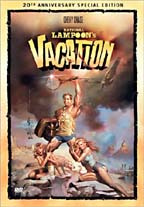
Director: Harold Ramis
Yes, it’s a silly, sophomoric comedy. But it’s laugh-out-loud silly, and who among us wouldn’t benefit from a good belly laugh? And a trip down memory lane (do you remember those endless family road trips? Are we there yet?) is the perfect way to celebrate Groundhog Day.
Clark Griswold, the sincere albeit nerdy dad, played to perfection by Chevy Chase, packs up the whole family for a Chicago-to-California family vacation, destination the mother of all theme parks, Wally World. Every detail of the trip has been worked out by Clark: the route mapped, roadside attractions identified (including the world’s largest ball of string), even a new station wagon purchased for their adventure. But if it can go wrong, it does, right from the beginning. Clark’s hapless wife, Ellen (Beverly D’Angelo) and two kids (Anthony Michael Hall and Dana Barron) endure every conceivable — and then some — road hazard. Including lost luggage, lost credit cards, multiple car wrecks and a couple of deaths. Along the way, the family is saddled with cranky Aunt Edna (Imogene Coca) and her bladder-challenged pooch. Sprinkled throughout are cameo appearances by John Candy, James Keach, Eugene Levy and, of course, Christie Brinkley, the siren tempting good husband and father Clark every mile of the way.
If you’re even thinking of planning a road-trip with your family, this film is a must-see — before you roll out the maps on your kitchen table!
—Margaret Tearman
Fear and Loathing in Las Vegas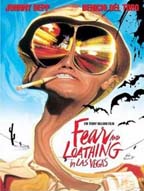
1998 • R • 118 mins.
Director: Terry Gilliam
Pair the odd aesthetic of director Terry Gilliam with the gonzo storytelling of Hunter S. Thompson and you’ve got a mind-addling cocktail.
The late Thompson (1937-2005) was a pioneer of gonzo journalism, a sort of impressionist style of novelized reporting more concerned with conveying mood than pure fact. Fear and Loathing in Las Vegas was his seminal work. Movie follows book, chronicling the strange journey of Thompson (Johnny Depp) and his Samoan lawyer (Benicio del Toro) to Las Vegas. Thompson’s assignment to cover a sporting event falls to the wayside as he and his large friend get lost in a drug-induced delirium, searching aimlessly for the American Dream.
It’s a weird ride, lilting in visual contortions, dark humor and eccentric narration. Gilliam delves into Thompson’s tale with zeal for a boozy-woozy aesthetic and incorporates strange imagery in the spirit of Ralph Steadman’s tortured book art. Depp and del Toro perform brilliantly as a couple of drugged-up idiots, and Thompson makes a cameo as a future vision of himself. It’s an odd flick, but entertainingly so.
—Mark Burns
VI. Drama
Dramas give our emotions a workout, for they put us in the shoes of characters whose pathways are very different from our own. For that difference we’re often fervently grateful, for the rules of drama are harsh as the Book of Job, demanding reversals of the sort we most profoundly hope to be spared in our own lives. Through pity and fear, our emotions are washed and rung out. Maybe, we come out cleaner.
Twelve Angry Men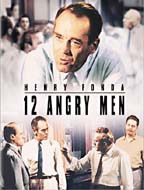
1957 • NR • 96 mins.
Director: Sidney Lumet
The fate of a Latino youth accused of murder rests in the hands of 12 white men who gather one summer afternoon in the jury room of a Manhattan courthouse. The men have baseball tickets, families to go home to. They sweat in the heat of the day. From the evidence, the case seems open and shut. The jurors chat happily, expecting a quick guilty verdict.
Only one man (Henry Fonda) votes not guilty. He has no arguments to make against the evidence, just one small point: is it right to so quickly condemn a man to die without at least spending a little time discussing the matter?
This single act of dissent cascades into an explosive, riveting character study of all 12 men. Alliances are formed and dissolved, prejudices revealed and shattered, as a careful analysis leads to new interpretations of the case. Only two of the jurors are ever named, yet, thanks to the masterful cinematography and script, by the end of the film we know all 12. Lest we ever think dissent and dialogue are dangerous — even unpatriotic, as some would have us believe — this film implores us that they are indispensable.
—B.C. Phillips
Mean Streets
1973 • R • 112 mins.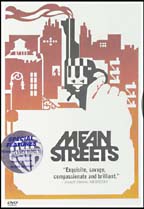
Director: Martin Scorsese
“You don't make up for your sins in church. You do it in the streets.” So warns the trailer of this break-out film for both director Scorsese and actor Robert De Niro.
Raw and gritty, Mean Streets unveiled Scorsese’s signature use of stop- and slow-motion cinematography paired with a pumping rock and roll soundtrack. The movie opens with the Rolling Stones’ Jumpin’ Jack Flash as De Niro’s Johnny Boy saunters in slow motion into the neighborhood bar. Set in New York’s Little Italy, the movie follows a thin plot line revolving around the characters and their schemes to get ahead and what they’re willing to do to get there.
As in all Scorsese films, guilt and redemption are heavy elements, but more for us watching than for the characters, petty hoods and wannabe gangsters. Johnny Boy travels through this world without a second thought, but his best friend, Charlie, played by Harvey Kietel, is caught between his Catholic upbringing and the realities of life on the mean streets.
—J. Alex Knoll
My Left Foot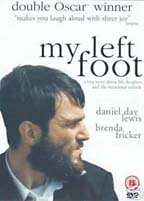
1989 • R • 98 mins.
Director: Jim Sheridan
“This is Christy Brown, my son. Genius.”
These are the words of Christy’s father as he steps into the local pub, Christy on his shoulder, acknowledging his love for and pride in his seven-year-old son publicly for the first time. Though wrapped in his family’s love, Christy was until this day largely imprisoned in his misdiagnosed cerebral palsy, unable to speak or show his intelligence. Then, butting into an argument between his brothers about a math problem, he scrawls the answer on a slate, using the only body part he can control well enough to write: the toes of his left foot.
Based on the real Christy Brown’s autobiographical book, My Left Foot is an honest look at both the impact of a severe disability on a life and the failures and successes of Christy. The writing is superb and the film is chock-full of fine performances. Its Oscar awards and nominations include best picture, best screenplay, best director (Jim Sheridan also wrote and directed In America), best actor (Daniel Day-Lewis won the Oscar) and best supporting actress.
—Al McKegg
Medicine Man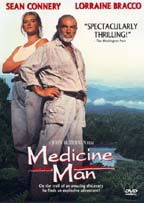
1992 • PG-13 • 100 mins.
Director John McTiernan
Medicine Man isn’t one of Sean Connery’s best-known films, but it should be. The drama, set in the Amazon rain forest, is a compelling story of a researcher studying plants for medicinal use and the head of the foundation that supports him. Dr. Crane, played wonderfully by Lorraine Bracco. comes to the scene totally for either life among the natives or the impending destruction of the village and research area by encroaching development. The hour and 40 minutes of run time go by quickly with the pace of the plot and the captivating scenery. This is a story that feels all too real in its address of uncomfortable issues of our time. Fortunately, the heaviness is balanced by humor, a little romance and the gentle innocence and simplicity of the villagers. Complex issues and personalities together in a masterful film are woven together in a movie worth seeing more than once.
—Alice Snively
VII. Grab Bag
If all movies could fit into categories, we’d be bereft of the unimagined treats they sometimes bring us. We wouldn’t love them so.
The Birds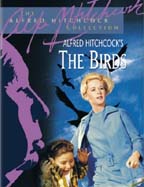
1963 • PG 13 • 119 min.
Director: Alfred Hitchcock
What motive do birds have to attack humans? In this most graphic of his movies, Hitchcock suggests that it’s revenge for human disregard for other creatures sharing the planet.
With a pair of caged lovebirds, rich girl Melanie (Tippy Hedren) pursues lawyer Mitchell (Rod Taylor) to a small community on California’s Bodega Bay. The first attack, that of a single seagull, is against mink-clad Melanie, as she motors across the bay.
The birds are cunning. They perch ominously at a school’s playground, then attack the children as they try to escape their sharp beaks and talons. Melanie herself is critically injured when she opens a door to a bedroom where the birds have silently gathered. Will the birds continue their war against humans? The wily director leaves it up to the viewer to figure out.
—Helena Mann-Melnitchenko
The Wild Parrots of Telegraph Hill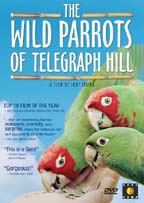
2004 • G • 83 mins.
Director: Judy Irving
Avian documentaries have been capturing hearts lately (March of the Penguins from down under, and Pale Male, the remarkable red-tailed hawk in Central Park that captivated New Yorkers). The latest, The Wild Parrots of Telegraph Hill, is brought to us by Mark Bittner, a homeless street musician in San Francisco who befriended the wild flock of cherry-headed conures.
Imported from southern Ecuador and Peru before 1993 when such imports was still legal, many of the wild birds were released when owners found they despised captivity, were noisy and bit. The flock caught Bittner’s attention, he began feeding, naming and observing their individual, humanlike personalities. Friendship and insight into his own life developed as well as a commitment to keep them wild, yet protected. Through great camera work, we now meet the cast of cherry-headed characters.
—M.L. Faunce
Dreamchild
1985 • PG • 90 mins.
Director: Gavin Millar
Few people now remember that the Alice of Alice In Wonderland was in fact a real little girl, whose family was close friends with author Lewis Carroll. Her name was Alice Hargreaves, and in 1932 she was invited to New York to Columbia University for a centenary celebration honoring Lewis Carroll. The 1985 film Dreamchild is based on the true story of Alice’s voyage to America.
She is an aging matron on her first ocean passage, and during the crossing she is visited by flashbacks of her childhood and relationship with Carroll, which are intriguing and in some ways unsettling. But she is also ‘visited’ by characters from the book. Jim Henson and his muppet crew designed the Mad Hatter and others. Her memories relived and her dialogues and meetings with the special characters make this film unusually interesting.
—Alice Snively
Buena Vista Social Club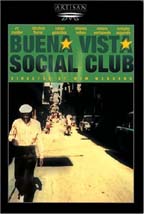
1999 • G • 105 mins.
Director: Wim Wenders
That elusive something you’ve felt missing from your life? Watch the Buena Vista Social Club, and you’ll know it’s Cuba. Since Fidel Castro and John Kennedy fell out a half a century ago, North America has gotten colder. It’s because we’ve lost our sentimental connection. North Americano Ry Cooder, the roots guitarist, knew where to find it.
Late in the last decade, Cooder and his son, drummer Joachim, traveled to the forbidden island to rediscover the musicians who put the soul and simmer into the nightclub life of the old, discredited régime. The Cooders played with them, recorded them and, with director Wim Wenders, made this great movie with them. Part jam session and part chronicle, it followed a ban

